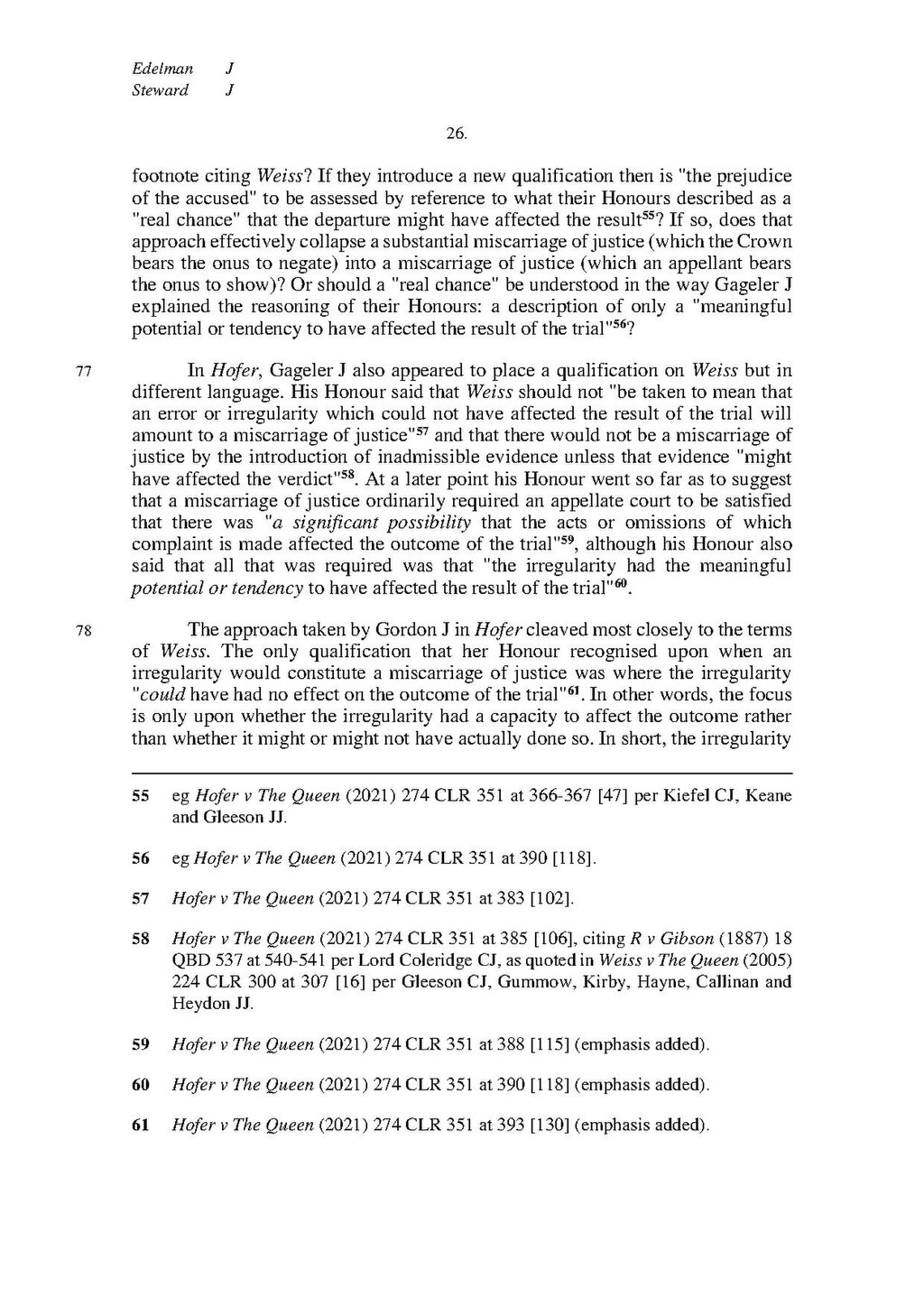Edelman J
Steward J
26.
footnote citing Weiss? If they introduce a new qualification then is "the prejudice of the accused" to be assessed by reference to what their Honours described as a "real chance" that the departure might have affected the result[1]? If so, does that approach effectively collapse a substantial miscarriage of justice (which the Crown bears the onus to negate) into a miscarriage of justice (which an appellant bears the onus to show)? Or should a "real chance" be understood in the way Gageler J explained the reasoning of their Honours: a description of only a "meaningful potential or tendency to have affected the result of the trial"[2]?
In Hofer, Gageler J also appeared to place a qualification on Weiss but in different language. His Honour said that Weiss should not "be taken to mean that an error or irregularity which could not have affected the result of the trial will amount to a miscarriage of justice"[3] and that there would not be a miscarriage of justice by the introduction of inadmissible evidence unless that evidence "might have affected the verdict"[4]. At a later point his Honour went so far as to suggest that a miscarriage of justice ordinarily required an appellate court to be satisfied that there was "a significant possibility that the acts or omissions of which complaint is made affected the outcome of the trial"[5], although his Honour also said that all that was required was that "the irregularity had the meaningful potential or tendency to have affected the result of the trial"[6].
The approach taken by Gordon J in Hofer cleaved most closely to the terms of Weiss. The only qualification that her Honour recognised upon when an irregularity would constitute a miscarriage of justice was where the irregularity "could have had no effect on the outcome of the trial"[7]. In other words, the focus is only upon whether the irregularity had a capacity to affect the outcome rather than whether it might or might not have actually done so. In short, the irregularity
- ↑ eg Hofer v The Queen (2021) 274 CLR 351 at 366–367 [47] per Kiefel CJ, Keane and Gleeson JJ.
- ↑ eg Hofer v The Queen (2021) 274 CLR 351 at 390 [118].
- ↑ Hofer v The Queen (2021) 274 CLR 351 at 383 [102].
- ↑ Hofer v The Queen (2021) 274 CLR 351 at 385 [106], citing R v Gibson (1887) 18 QBD 537 at 540–541 per Lord Coleridge CJ, as quoted in Weiss v The Queen (2005) 224 CLR 300 at 307 [16] per Gleeson CJ, Gummow, Kirby, Hayne, Callinan and Heydon JJ.
- ↑ Hofer v The Queen (2021) 274 CLR 351 at 388 [115] (emphasis added).
- ↑ Hofer v The Queen (2021) 274 CLR 351 at 390 [118] (emphasis added).
- ↑ Hofer v The Queen (2021) 274 CLR 351 at 393 [130] (emphasis added).
